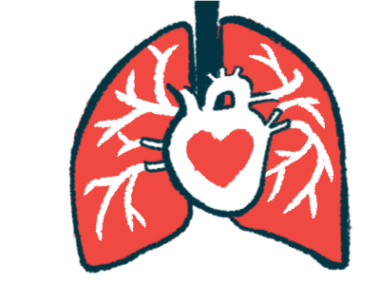Certain brain conditions may be symptoms of AIP in rare cases
AIP should be considered early for people with specific brain syndromes: Report
Written by |

A recent case report highlights how acute intermittent porphyria (AIP) should be considered early in the process of diagnosis when patients show certain brain symptoms and heart problems.
The brain conditions documented are posterior reversible encephalopathy syndrome (PRES), which is marked by swelling in parts of the brain, and reversible cerebral vasoconstriction syndrome (RCVS), which occurs when blood vessels suddenly narrow in the brain.
“PRES and RCVS have a wide range of possible causes, and physicians must be aware of those rare causes,” researchers wrote. “Acute intermittent porphyria should be considered early and equal to other differential diagnoses in the patient with unexplained abdominal pain, hyponatremia [low sodium levels], PRES, RCVS and /or acute myocardial infarction.”
The study, “Acute Intermittent Porphyria Presenting with Posterior Reversible Encephalopathy Syndrome, Reversible Cerebral Vasoconstriction Syndrome and Myocardial Ischemia: A Case Report and Review,” was published in the journal Psychology Research and Behavior Management.
AIP, the most common form of acute porphyria, is caused by mutations in the HMBS gene, which provides instructions for making an enzyme called hydroxymethylbilane synthase. Mutations cause the enzyme’s deficiency, leading to the accumulation of porphyrins and other precursor molecules in tissues and organs, and causing damage.
AIP symptoms can include seizures, confusion
Like other types of acute porphyria, AIP symptoms include abdominal pain, as well as neurological and psychiatric dysfunction, which can appear in the form of seizures and confusion.
In the report, researchers in China described the case of a 28-year-old woman with AIP with rare manifestations, specifically PRES and RCVS.
The woman was hospitalized in February 2019 due to fever and severe intermittent abdominal pain that had been lasting for five days. The three days before her admission, she experienced nausea and vomiting. On admission to the hospital, her blood pressure was normal, but physical examination revealed signs of inflammation in the gallbladder. No skin redness, blistering, or scarring was observed, and her family medical history showed no significant inherited disorders.
She experienced generalized tonic-clonic seizures on the night of her hospital admission and on the third day of her hospital stay, for which she received diazepam (sold under the brand name Valium, among others). MRI scans revealed the presence of brain lesions and blood vessel changes.
The patient was transferred to the neurology department after three days with high blood pressure and dark urine.
Examination revealed perturbations of consciousness, accompanied by muscle weakness and poor tendon reflexes. A heart function test also revealed abnormalities, which were further supported by additional exams showing an ejection fraction (EF) of 44%. Of note, EF indicates the percentage of blood that’s pumped out of the heart on each heartbeat. Generally, an EF value below 50% is considered abnormal.
Patient’s symptoms suggested AIP despite no family history of porphyria
Despite the lack of a family history of porphyria, the patient’s combination of neurological symptoms, abdominal pain, and dark colored urine suggested she might have AIP.
The patient was started on glucose and a high carbohydrate diet as hematin, a molecule that ultimately suppresses porphyrin formation, was not available at the hospital. She responded well and started to recover gradually. Her abdominal pain eased after five days, with blood-related parameters and blood pressure also returning to normal levels.
On day 18 after admission, her EF had increased to 55%. Within three weeks of admission, the patient had recovered and was discharged, despite still having muscle weakness. Later follow-up scans showed blood vessel alterations discovered earlier had nearly resolved, with the exception of a bulge (aneurysm) in the left vertebral artery, one of the main blood vessels supplying blood to the brain and spinal cord. Within one year, the bulge had become smaller, but her red blood cell counts were lower than normal.
A genetic test revealed the presence of a mutation in the HMBS gene, which was also found in her father, confirming the diagnosis of AIP.
Overall, this case report highlights how AIP should be considered early on in the process of diagnosis when patients show other more rare symptoms, including PRES, RCVS, and heart problems.







